Yup. The most consistently accurate/precise factory-loaded 223 Remington ammunition fired at 100 yards fired from a semi-automatic AR-15 that I've tested is the Federal 69 grain Gold Medal ammunition.It’s the 1/4 moa with factory ammo. There’s too much variance in factory ammo to do that consistently.
Federal 69 grain Gold Medal Match Ammunition Accuracy
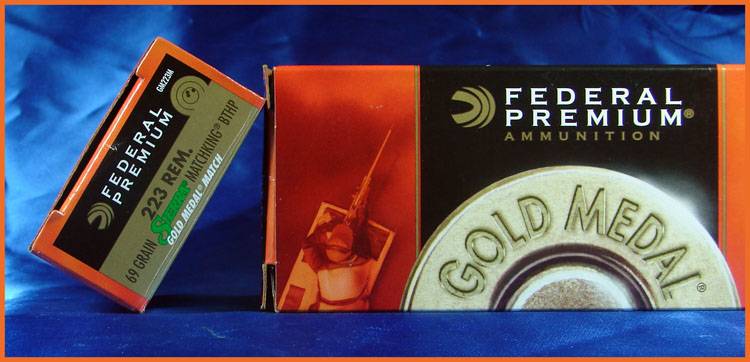
In their 1984 catalog, Sierra Bullets introduced the .22 caliber (0.224”) 69 grain MatchKing HPBT (hollow point boat tail) bullet (#1380). The 69 grain MatchKing was “developed as a target bullet for testing by military teams in the new M16A2 rifle”* and the bullet became a popular choice for shooters using the AR-15 in High Power Rifle Competition.
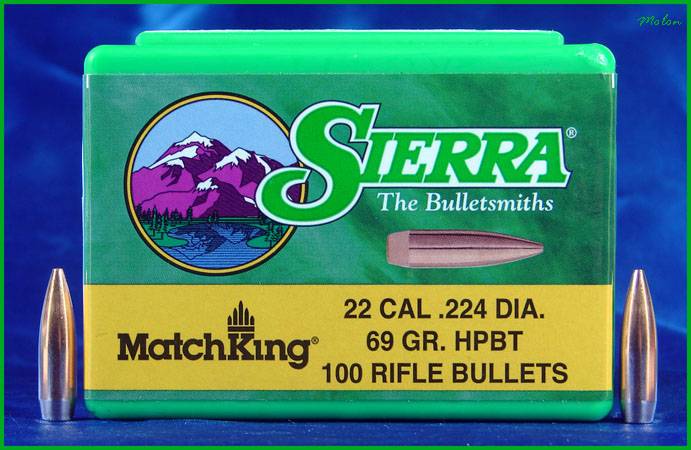
While the US military had experimented with “heavy” FMJ (full metal jacket) bullets for the 5.56mm cartridge as far back as the mid-1960s, (the Colt/Federal 5.56mm 68 grain FMJ) the .22 caliber 69 grain MatchKing was the first heavy OTM (open-tip match) bullet that was available to the general public as a reloading component for 223 Remington/5.56mm cartridges. (Hornady’s 68 grain OTM bullet (#2278) wasn’t introduced until approximately two years later.)

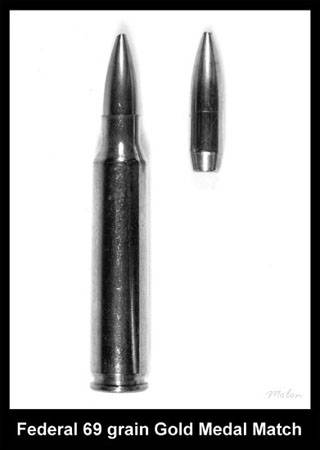
In their 1989 ammunition catalog, the Federal Cartridge Company debuted an addition to its “Match” line-up of factory loaded rifle ammunition; a 223 Remington load topped with none other than the Sierra 69 grain MatchKing (223M). In their 1992 catalog, Federal expanded the nomenclature for this load to “Premium Match” (P223M) and in their 1993 catalog it became “Gold Medal Match” (GM223M) as part of a marketing campaign capitalizing on the USA Shooting Team’s success in the Barcelona Olympics using Federal ammunition.
It’s interesting to note that pertaining to the accuracy/precision development and multifaceted testing of the Federal ammunition that helped the US Olympians win gold and silver medals in Barcelona, Federal’s Director of Product Engineering, Dave Longren, had this to say:
“The standard test string was three 10-shot groups, with the most attention paid to the 30-shot composite. When you’re working at this level, the traditional five 5-shot group test simply doesn’t give you statistically valid results.”**
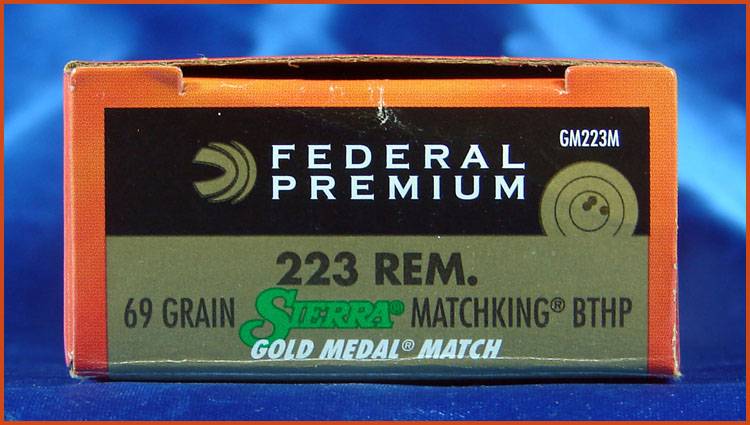

The 69 grain Sierra MatchKings loaded in the lot of Federal Gold Medal Match ammunition that I evaluated for this article had a nominal length of 0.890”. The nominal cartridge OAL of this load was 2.248”. Through some simple testing, I determined that the 69 grain MatchKing has a specific gravity of approximately 10.2.
According to Ballistic Performance of Rifle Bullets by Bryan Litz, the 69 grain MatchKing has an average G1 ballistic coefficient of 0.330 and an average G7 ballistic coefficient of 0.169. The same source states that the “recommended twist for optimal performance” of the 69 grain MatchKing “is 1:9.5” or faster.”
The 69 grain MatchKings that top the Federal Gold Medal Match ammunition are loaded in Federal brass. The head stamp for this lot reads “FC 13 223 REM”. The rounds are primed with Federal Gold Medal Small Rifle Match Primers (GM205M). The primer pockets are crimped and sealed with a blue lacquer sealant.
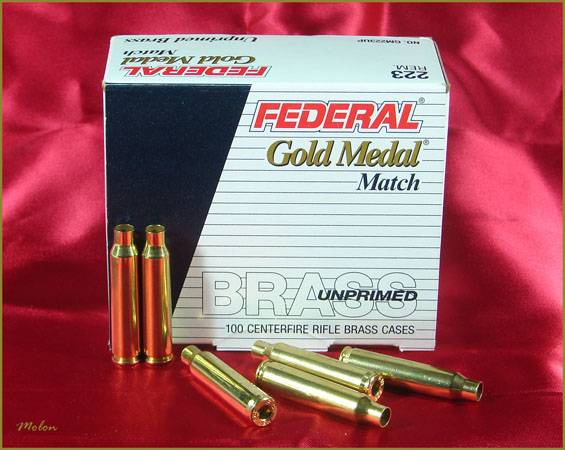
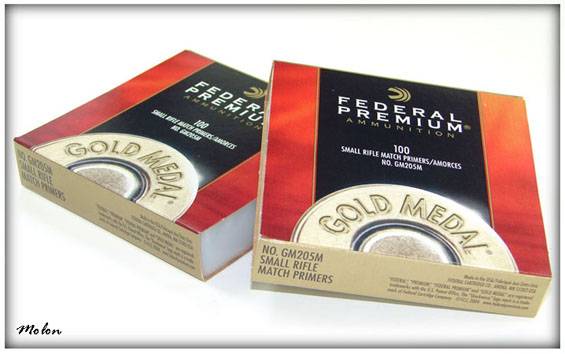

The case-mouths of this lot of Federal 69 grain Gold Medal Match ammunition are sealed with asphalt sealant. The case-mouths have a slight taper-crimp which produces a shallow circumferential crease in the bearing surface of the 69 grain MatchKings. The pic below shows a pulled bullet on the right (the crease in the bullet indicated by the red arrow) next to a virgin 69 grain MatchKing on the left.

This lot of ammunition is charged with a “ball powder” (though I have seen lots in the past that were charged with a short-cut extruded powder.) The squares in the red grid pictured below are 1/10th of an inch.
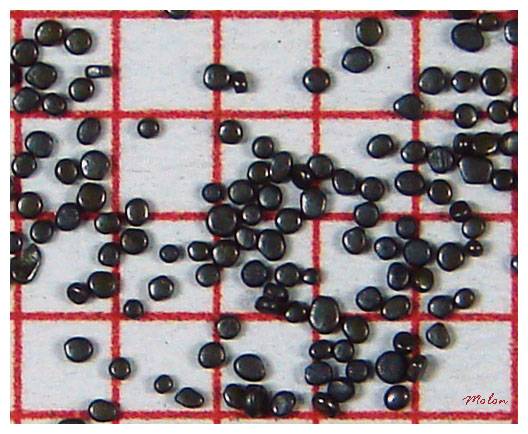
Velocity
When it was first introduced, Federal advertised the muzzle velocity of the 69 grain Gold Medal Match ammunition as 3000 FPS. More recent advertising lists the muzzle velocity at 2950 FPS. These figures are from 24” barrels.


I chronographed the Federal 69 grain Gold Medal Match ammunition from a semi-automatic AR-15 with a chrome-lined, NATO chambered 20” Colt M16A2 barrel with a 1:7” twist.

Chronographing was conducted using an Oehler 35-P chronograph with “proof screen” technology. The Oehler 35P chronograph is actually two chronographs in one package that takes two separate chronograph readings for each shot and then utilizes its onboard computer to analyze the data to determine if there is any statistically significant difference between the two readings. If there is a statistically significant difference in the readings, the chronograph “flags” the shot to let you know that the data is invalid. There was no invalid data flagged during this testing.
The velocities stated below are the muzzle velocities as calculated from the instrumental velocities using Oehler’s Ballistic Explorer software program. The strings of fire consisted of 10 rounds over the chronograph.
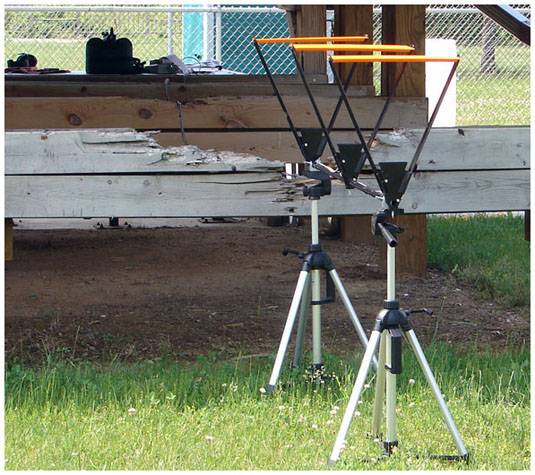
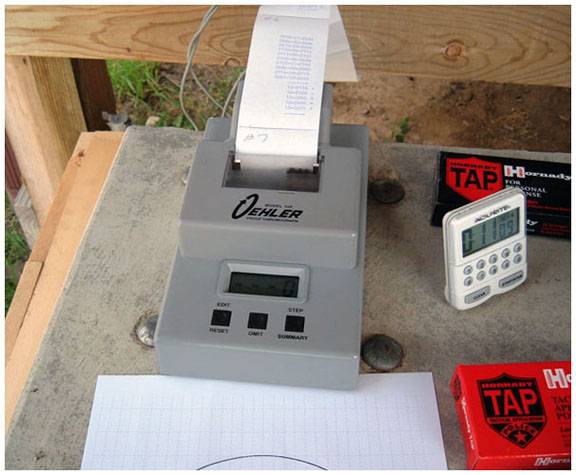
Each round was single-loaded and cycled into the chamber from a magazine fitted with a single-load follower. The bolt locked-back after each shot allowing the chamber to cool in between each shot. This technique was used to mitigate the possible influence of “chamber-soak” on velocity data. Each new shot was fired in a consistent manner after hitting the bolt release. Atmospheric conditions were monitored and recorded using a Kestrel 4000 Pocket Weather Tracker.
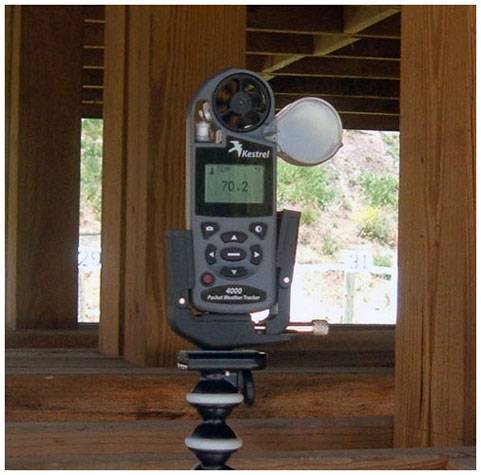
Atmospheric conditions
Temperature: 70 degrees F
Humidity: 76%
Barometric pressure: 30.14 inches of Hg
Elevation: 950 feet above sea level
The muzzle velocity for the 10-shot string of the Federal 69 grain Gold Medal Match ammunition fired from the 20” Colt barrel was 2732 FPS with a standard deviation of 16 FPS and a coefficient of variation of 0.59%.
For those of you who might not be familiar with the coefficient of variation (CV), it is the standard deviation, divided by the mean (average) muzzle velocity and then multiplied by 100 and expressed as a percentage. It allows for the comparison of the uniformity of velocity between loads in different velocity spectrums; e.g. 77 grain loads running around 2,650 fps compared to 55 grain loads running around 3,250 fps.
For comparison, the mil-spec for M193 allows for a coefficient of variation of approximately 1.2%, while one of my best 77 grain OTM hand-loads, with a muzzle velocity of 2639 PFS and a standard deviation of 4 FPS, has a coefficient of variation of 0.15%.

Accuracy
I conducted an accuracy (technically, precision) evaluation of the Federal 69 grain Gold Medal Match ammunition following my usual protocol. This accuracy evaluation used statistically significant shot-group sizes and every single shot in a fired group was included in the measurements. There was absolutely no use of any group-reduction techniques (e.g. fliers, target movement, Butterfly Shots).
The shooting set-up will be described in detail below. As many of the significant variables as was practicable were controlled for. Also, a control group was fired from the test-rifle used in the evaluation using match-grade, hand-loaded ammunition; in order to demonstrate the capability of the barrel. Pictures of shot-groups are posted for documentation.
All shooting was conducted from a concrete bench-rest from a distance of 100 yards (confirmed with a laser rangefinder.) The barrel used in the evaluation was free-floated. The free-float handguards of the rifle rested in a Sinclair Windage Benchrest, while the stock of the rifle rested in a Protektor bunny-ear rear bag. Sighting was accomplished via a Leupold Competition Series 45x45mm scope adjusted to be parallax-free at 100 yards. A mirage shield was attached to the top of the free-float handguard. Wind conditions on the shooting range were continuously monitored using a Wind Probe. The set-up was very similar to that pictured below.
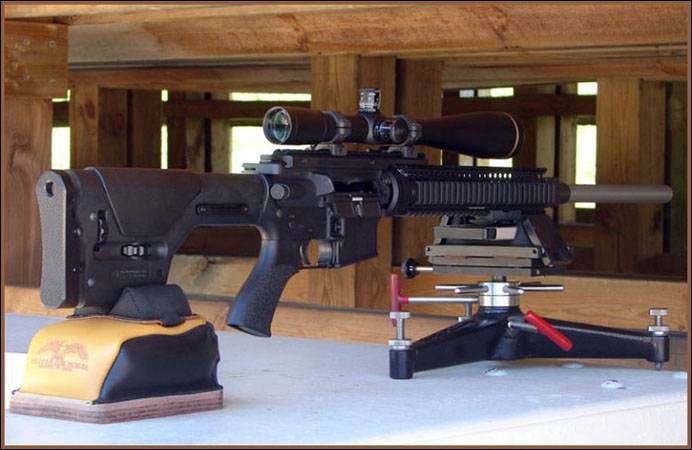
The Wind Probe.

The test vehicle for this accuracy evaluation was one of my semi-automatic precision AR-15s with a 24” Krieger barrel. The barrel has a 5.56mm Match chamber with a 1:7.7” twist. Prior to firing the 69 grain Gold Medal Match ammunition, I fired a 10-shot control group using match-grade hand-loads topped with the Barnes 85 grain Match Burner. That group had an extreme spread of 0.56”.
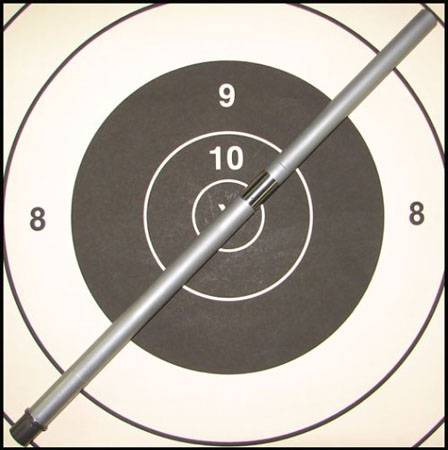
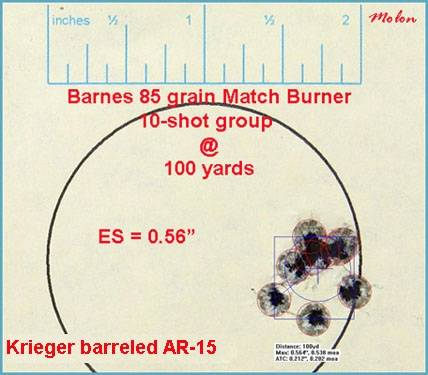
Three 10-shot groups of the 69 grain Gold Medal Match ammunition were fired in a row with the resulting extreme spreads:
0.67”
0.73”
0.67”
for a 10-shot group average extreme spread of 0.69”. The three 10-shot groups were over-layed on each other using RSI Shooting Lab to form a 30-shot composite group. The mean radius for the 30-shot composite group was 0.24”.
The smallest 10-shot group . . .
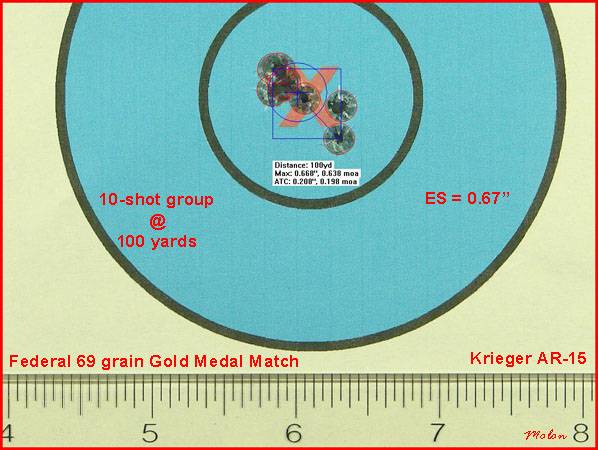
The 30-shot composite group . . .

....
* Technical Staff. “Sierra .22 Cal. 69-gr. MatchKing.” American Rifleman Jan. 1984: 60-61. Print.
** Hunnicutt, Robert. “Ammo Good as Gold.” American Rifleman Nov. 1992: 32-33, 72-73. Print.
....


